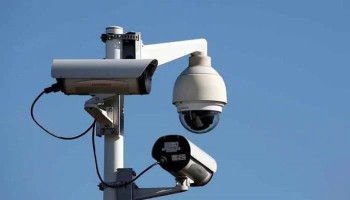
Travis Brashears, a SpaceX engineer has revealed that the rocket company's laser system for Starlink is transmitting 42 petabytes of data for customers per day. One petabytes is equal to a million gigabytes(GBs).
“We're passing over terabits per second [of data] every day across 9,000 lasers,” SpaceX engineer Travis Brashears said today at SPIE Photonics West, an event in San Francisco focused on the latest advancements in optics and light. "We actually serve over lasers all of our users on Starlink at a given time in like a two-hour window,” the engineer disclosed.
While Starlink employs radio waves to beam high-speed internet, SpaceX has supplemented its satellited with a “laser link” system to foster latency drive down and augment its global coverage, according to PCMag.
Read more: Neuralink implants first chip on human brain — Musk
Capable of supporting a 100Gbps connection per link, these lasers play a vital role to aid satellites retrieve data when SpaceX's ground stations are out of reach, in places like over the ocean or Antarctic. Given that, a satellite can pass the data to and from another Starlink satellite in Earth’s orbit.
According to Brashears, the satellites deliver around 266,141 “laser acquisitions” every day by continuously establishing laser links, with a possibility of maintaining the links for weeks and transmission rates of up to 200Gbps in certain instances.
He also claimed that Starlink’s laser system was able to establish a connection between two satellites at a distance of 5,400 kilometers (3,355 miles) from each other. The link was so long “it cut down through the atmosphere, all the way down to 30 kilometers above the surface of the Earth,” he said, before the connection broke.
“Another really fun fact is that we held a link all the way down to 122 kilometers while we were de-orbiting a satellite,” he said. “And we were able to downstream the video.”
During his presentation, Brashears showcased a slide demonstrating the laser system's ability to send data to a Starlink dish in Antarctica through about seven different pathways. In the future, SpaceX plans to improve the laser system so that it can be moved and set up on satellites owned by other companies.
















